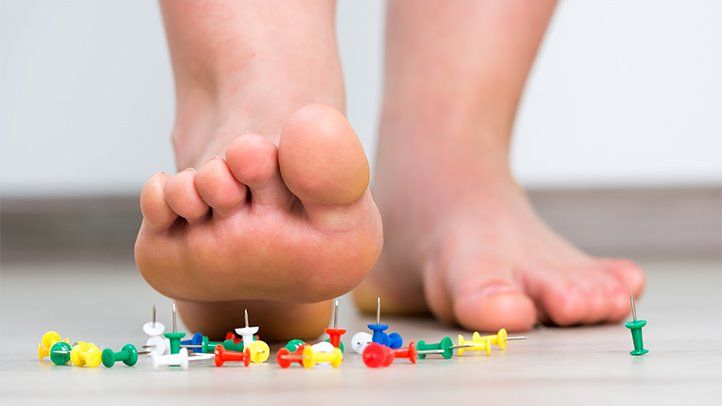NEUROPATHY
Neuropathy is damage or dysfunction of one or more nerves that typically results in numbness, tingling, muscle weakness and pain in the affected area. Neuropathies frequently start in your hands and feet, but other parts of your body can be affected too.
Neuropathy results when nerve cells, called neurons, are damaged or destroyed. This disrupts the way the neurons communicate with each other and with the brain.

CAUSES
This is a leading cause of neuropathy in the United States. Some 60% to 70% of people with diabetes experience neuropathy. Diabetes is the most common cause of small fiber neuropathy, a condition that causes painful burning sensations in the hands and feet.
Injuries from falls, car accidents, fractures or sports activities can result in neuropathy. Compression of the nerves due to repetitive stress or narrowing of the space through which nerves run are other causes.
Guillain-Barre syndrome, lupus, rheumatoid arthritis, Sjogren’s syndrome and chronic inflammatory demyelinating polyneuropathy are autoimmune disorders that can cause neuropathy. Infections including chickenpox, shingles, human immunodeficiency virus (HIV), herpes, syphilis, Lyme disease, leprosy, West Nile virus, Epstein-Barr virus and hepatitis C can also cause neuropathy.
- OTHER HEALTH CONDITIONS
Neuropathy can result from kidney disorders, liver disorders, hypothyroidism tumors (cancer-causing or benign) that press on nerves or invade their space, myeloma, lymphoma and monoclonal gammopathy.
TREATMENT
This treatment involves placing electrodes on the skin at or near the nerves causing your pain. A gentle, low-level electrical current is delivered through the electrodes to your skin. Treatment schedule (how many minutes and how often) is determined by your therapist. The goal of TENS therapy is to disrupt pain signals so they don’t reach the brain.

- PHYSIOTHERAPY
- MECHANICAL AIDS
Braces and specially designed shoes, casts and splints can help reduce pain by providing support or keeping the affected nerves in proper alignment.
- MEDICINES
These can be used to control pain. A number of different medications contain chemicals that help control pain by adjusting pain signaling pathways within the central and peripheral nervous system. These medications include:
Antidepressants such as duloxetine or nortripyline.
Topical (on the skin) patches and creams containing lidocaine (Lidoderm, Xylocaine) or capsaicin.
Authors
Dr . P. Senthil Selvam, PhD
Professor & HOD, School of Physiotherapy, VISTAS, Chennai.
Dr .D. Hepzibah Rubella, MPT (Ortho)
Research Scholar, School of Physiotherapy, VISTAS, Chennai.
Vels Institute of Science, Technology & Advanced Studies (VISTAS)

